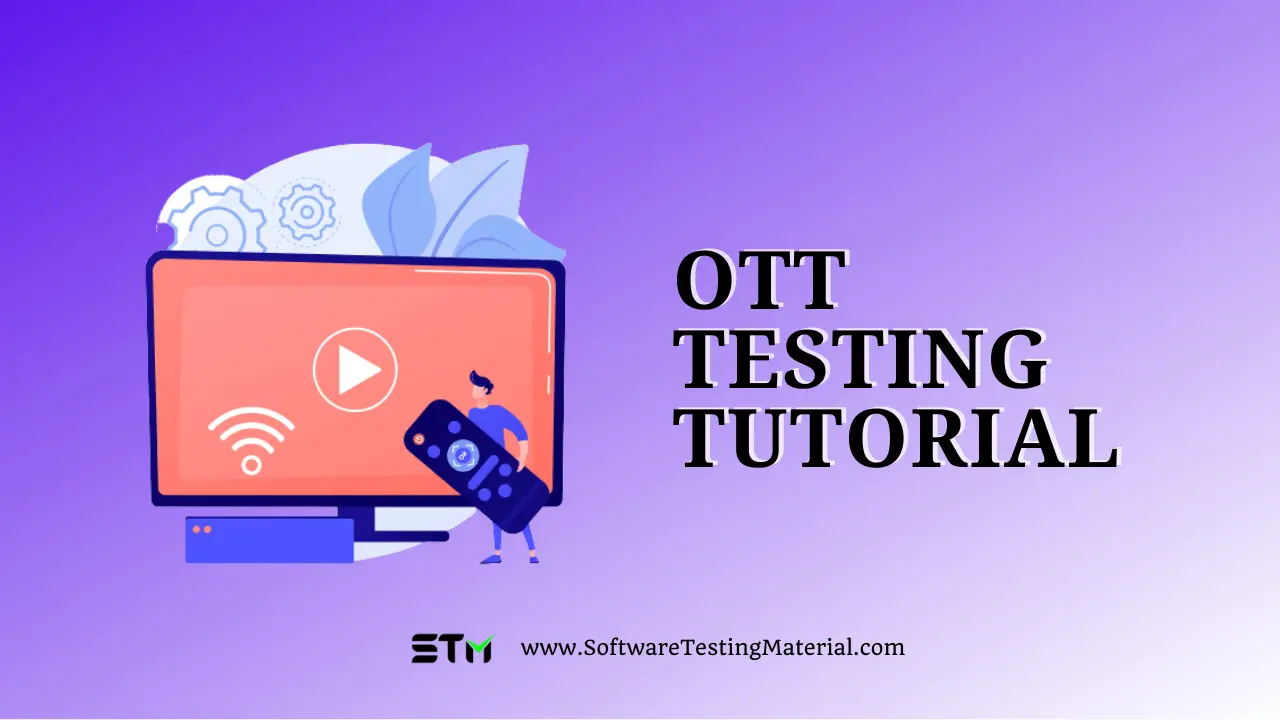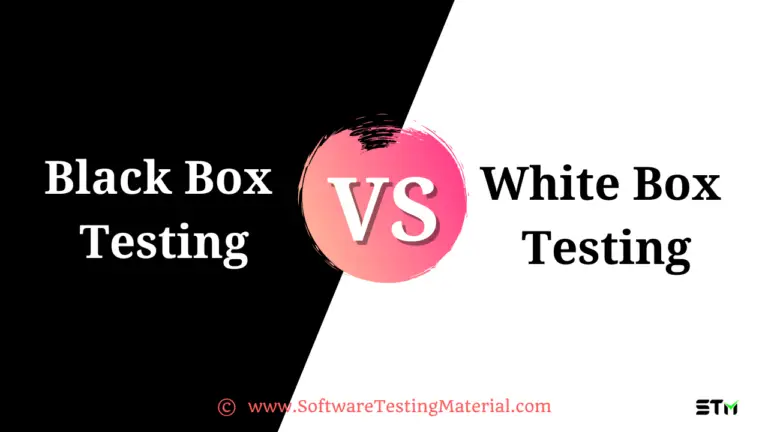OTT Testing Tutorial | Benefits, Challenges, How To Perform
This guide explores what is OTT testing, the benefits, and the common challenges involved in Over-The-Top testing, and to help you ensure that the OTT platform is well tested.
With the increased popularity of OTT media services in recent years, OTT testing has become a must-have skill set in the tech industry.
OTT, also known as Over-The-Top, revolutionizes the way we enjoy video and audio content. OTT platforms such as Netflix, Apple TV, Amazon Prime, Disney, Hulu, and many more offer amazing benefits.
By streaming services over the internet, it grants you the power to access the OTT platform on any internet-enabled device, ranging from smart TVs to mobile phones.
OTT platforms offer amazing benefits, but testing them poses a real challenge.
We must ensure that the functionalities stay consistent, no matter which device they’re accessed from.
In this tutorial blog post, we’ll explore what exactly goes into successful OTT Testing efforts and break down different strategies that users can use to ensure their projects are thoroughly tested before launch.

What is OTT Testing
OTT testing is a valuable part of the development cycle for Over-The-Top (OTT) services. It involves testing streaming video quality, buffering behavior, compatibility with various devices and networks, and other aspects to ensure that end users have the best user experience when watching OTT content. OTT testing also helps developers identify any issues in their applications or infrastructure before launch.
By doing OTT testing, developers are able to understand the performance of their applications and services in real-world conditions. This helps them adjust the streaming quality, buffering behavior, and other features to ensure that users have a smooth experience when they use their applications or services. Additionally, by performing OTT testing on various devices and networks beforehand, developers can ensure compatibility with different environments and minimize potential disruptions during launch.
There are two key areas to prioritize when conducting OTT testing.
User Interface: This is all about making sure that the front-end OTT elements and controls work seamlessly for users. It’s about creating a smooth and intuitive interaction.
User Experience: This is all about how users perceive and enjoy the services provided by the streaming service. It’s about crafting an overall viewing experience that keeps them coming back for more.
So, in a nutshell, OTT testing is about perfecting the way users interact with the platform and ensuring they have a top-notch viewing experience.
Why is OTT Testing Important?
In today’s world of ever-increasing demand for OTT services, it is essential for companies to prioritize OTT testing in order to provide their users with the best user experience possible.
OTT testing is an essential step in ensuring that user experience is maintained. By testing OTT platforms, companies can identify any issues or bugs before it reaches the market and ensure a high-quality experience for their users.
Additionally, OTT testing also helps to increase customer satisfaction by offering support services that are both efficient and reliable.
Moreover, OTT services often require integration with multiple devices. OTT testing helps to ensure that it functions correctly across all devices, thus ensuring a seamless user experience across all platforms.
Furthermore, OTT testing also provides valuable insights into user behaviour which can be used to improve the product further and enhance customer satisfaction.
According to AlliedMarket Research, the global OTT market size was valued at $121.61 billion in 2019, and is projected to reach $1,039.03 billion by 2027, growing at a CAGR of 29.4% from 2020 to 2027.
Benefits
Here are some benefits of OTT testing that you should know about:
Enhancing customer satisfaction: With OTT testing, we can identify and fix issues even before they have a chance to impact our valued customers. This translates into not just happier customers, but an exceptional overall experience that keeps them coming back for more.
Identifying and resolving issues: Testing plays a vital role in detecting and resolving issues such as buffering, lag, and video quality problems. By doing so, we ensure that users enjoy a buttery-smooth and seamless experience.
Minimizing downtime: By testing our OTT apps, we can minimize downtime and make sure our video streaming service is always available when our users need it.
Quality of cross-platform experience: We want our video streaming service to work flawlessly on any device or platform. That’s why OTT testing is crucial in ensuring a high-quality experience for all our users.
Enhancing revenue: By providing an exceptional user experience, we can draw in and keep more customers, which will ultimately boost our revenue.
Evolving with the technology change: With technology constantly evolving, OTT testing is crucial to ensure our services work seamlessly across various devices and platforms. It helps us stay up-to-date and deliver the best user experience possible.
Types of Testing
When it comes to testing, there are different types that help ensure the quality of a product. Let’s dive into a few of them:
Functional Tests
UI Testing: This type of testing focuses on inspecting the frontend elements that users interact with, such as buttons, forms, and links. It ensures that these elements work properly and enable the desired functionality.
Feature Testing: Here, the goal is to evaluate if the features described in the client requirements are present and functioning as expected. It helps identify any bugs or issues that may arise.
API Testing: QA specialists perform API tests to guarantee that a product is seamlessly integrated with databases, operating systems, libraries, and third-party services for a smooth and flawless user experience.
Compatibility Testing: This type of testing checks whether the product works well with various devices, operating systems, browser versions, and hardware specs.
Acceptance Testing: Before releasing a product, acceptance tests are conducted to ensure its functionality. Users test it from their perspective and provide valuable feedback.
Apart from these functional tests, there are non-functional tests that focus on other aspects of a software’s behavior:
Non-Functional Tests
Performance Testing: QA teams run performance tests to assess how well a product performs under different user loads and heavy traffic. It helps understand its scalability and capacity.
UX Testing: UX tests evaluate the product’s design, usability, and overall user experience. It ensures that the product is easy to use and visually appealing.
Localization Testing: This involves testing the product’s performance and capabilities from the perspective of a specific audience with different languages and cultures.
Types of Testing Post-Release
During this phase, the following tests are typically conducted:
Smoke Testing: Smoke testing is like a quick check to catch any obvious errors that might pop up with bug fixes or updates to a new build. It’s like a quick check to make sure everything is working fine before diving deeper into more extensive testing.
Regression Testing: Regression tests are super helpful for QA specialists to spot bugs in new updates after we make changes to the code. Basically, it’s like double-checking to catch any issues that might have slipped through the cracks. Since regression testing involves a lot of repetitions, teams usually prefer to automate it to save time and effort.
QA Audit: Independent companies typically conduct QA audits, which serve as a meticulous examination to evaluate the quality and performance of the product. These systematic audits ensure that everything is up to par and meets the required standards, leaving no room for compromise.
Business Analysis: In business analysis, we work with user feedback and stay updated with the latest trends to estimate how well our product is performing and what features it needs. It’s like gathering insights to understand how our product is doing and where we can make improvements. This information is crucial for making informed decisions and effectively scaling our product.
Checklist
In the OTT testing process, it is important to review and test for quality assurance. A comprehensive OTT testing checklist ensures that every aspect of the delivery and content are properly evaluated prior to deployment.
Here is a general list of items that should be included in your OTT Testing Checklist:
- Validate that the overall navigation experience is intuitive and user-friendly.
- Ensure that content can be delivered to multiple devices without issue.
- Ensure that features like autoplay and skip intro are implemented correctly and activated at the appropriate moments.
- Ensure that the videos in the watchlist can be accessed at a later time.
- Verify if users are able to resume video playback from the point they left off and accurately differentiate between previously watched and new videos.
- Ensure that users are able to pause, mute, or unmute the video as necessary when the platform includes a trailer autoplay feature.
- Make sure the audio and video are perfectly synchronized, with easily switchable subtitles that stay in perfect sync with the content.
- Verify all audio levels are within acceptable parameters.
- Ensure that all video codecs and file containers are correctly configured.
- Review overall video quality, including resolution, aspect ratio, frame rate, bitrate, and color depth.
- Confirm that all subtitles are encoded properly and accurately.
- Make sure the titles and descriptions of the assets are accurate and relevant.
- Review the user experience on all devices, including mobile and TV.
- Analyze metrics such as audience reach and engagement (e.g., video plays, and viewing time) to measure the success of the OTT product.
- Test for any unexpected behavior or system crashes.
- Verify if the content can be accessed by the appropriate number of simultaneous users as per their subscribed plan.
- Ensure that the watchlist, viewing history, downloads, and recommendations of each user are kept separate and distinct.
- Ensure that the platform provides support for various payment options, including debit card, credit card, Internet banking, etc. Additionally, verify that users are guided to a secure channel to securely complete the payment process.
- Conduct rigorous testing of payment failure scenarios for various reasons, while ensuring that users receive adequate guidance and support to instill a sense of security.
How to perform OTT Testing
OTT testing is a complex process that involves testing the platform on various devices, browsers, and networks. It also requires knowledge of different video streaming protocols to ensure the platform works as expected. Testing a platform for OTT content can be complicated, but it is essential to ensure the quality of streaming experience and security.
- Create an effective test plan by defining scenarios in detail.
- Allocate time specifically for preparing device-specific checklists before starting the actual testing process.
- Test for basic functionality such as registration, login, search, playback, and so on.
- Make sure to cover all aspects of video streaming quality such as audio/video sync, download speed, buffering time, etc., across different devices and bandwidths.
- Conduct security tests to ensure user data is not compromised at any time.
- Ensure that the actual and expected behaviors are tested for different user roles, device types, and geolocation.
- Simulate real-life scenarios like network connection drops during playback or switching between devices.
- Perform performance tests to determine limits and identify scalability issues such as latency, response time, etc., based on the user load.
Challenges
When testing a streaming application, there are several crucial factors to consider. Beyond browsers and devices, testers must also account for network performance, buffering, latency, and other variables.
In the realm of OTT applications, testers often encounter common challenges that demand their expertise and attention.
Network issues: Having a fast internet speed is super important for OTT services. If the data transfer rate is slow, it can really slow down the content buffering. When the content loads slowly, people might just give up and switch to other brands. So, it’s really crucial to test how the OTT platform performs with different network types (Wi-Fi, 4G, 5G, etc.) and network conditions (low bandwidth, etc..)
Cross-Device Issues: OTT platforms are designed to seamlessly function on a wide range of internet-enabled devices, including computers, smartphones, smart TVs, tablets, game consoles, and streaming boxes. But here’s the catch: testing these platforms on every single device can be a real challenge since testing teams might not have access to every device out there.
Cross-browser issues: OTT applications are not just limited to devices, they can even be accessed through a web browser. It’s crucial to conduct cross-browser testing to ensure smooth functionality across different browsers. However, the real challenge lies in testing these applications on multiple browsers and versions is like navigating a thrilling maze of compatibility.
App performance issues: OTT app performance suffers from hangs, crashes, ANR (Application Not Responding), infinite loading, and many more. Every OTT platform requires thorough testing to ensure their applications are optimized for every device type, OS version, network/Wi-Fi connection, and other variable factors.
Security Vulnerabilities: OTT services typically deal with sensitive user information, like payment and personal details. So these platforms need to be tested for any security vulnerabilities such as XSS, SQL injections, and other malicious attacks. A thorough testing process is necessary to ensure that the platform remains secure and data-safe for users.
User interaction issues: Users of the OTT application might not have the technical expertise to understand all the underlying problems in the app. For instance, with issues caused by slow network speed, customers may give negative feedback without knowing the exact reason behind the problem. Testers should test these scenarios and provide solutions that explain the issues in simpler terms to customers.
Best Practices
It is essential to ensure that your OTT platform provides a reliable user experience at all times. To achieve this, there are a few best practices for OTT testing that should be adopted.
User experience: This includes testing for functionality, usability, compatibility with different devices and browsers, and response times. Additionally, you should also test for features such as video playback quality, buffering time, video encoding formats, subtitles, and closed captions support.
Performance benchmarking: This includes making sure that the streaming service does not become bogged down with too many users, as well as testing for scalability. Additionally, you should also test for analytics accuracy and reporting to ensure that your platform is accurately measuring key performance metrics.
Automation in OTT testing: Automation can significantly reduce the time and effort required for testing, while at the same time allowing for more comprehensive tests. Automated tests also allow for faster deployments since entire test suites can be run with a single command. Automation also allows for tests to be run on a regular basis, helping ensure that any changes made to the platform are compliant with best practices.
End-user feedback: Feedback from real users can provide valuable insights into how your platform is performing and what improvements can be made. Utilizing user feedback can help to ensure that your platform is meeting customer needs and expectations.
OTT testing tools and services: These tools and services can help streamline the testing process and make it easier to identify potential issues in a timely manner. Furthermore, these tools can generate reports that provide detailed insights into how your platform is performing, allowing you to detect any bugs or bottlenecks that could be impacting user experience. Additionally, these services can also provide recommendations for improving your platform and help you develop more effective tests.
A/B testing: It is important to conduct A/B testing on your OTT streaming service in order to optimize user experience and ensure maximum engagement with users. A/B testing involves comparing two versions of a feature or design to determine which one performs better. This practice allows you to test different elements of your platform to maximize user engagement and optimize the overall user experience.
By following these best practices, developers can ensure that their OTT streaming service provides the highest quality of user experience and performance. This will help guarantee customer satisfaction and lead to increased success for businesses in the OTT space.
Frequently Asked Questions (FAQs)
What is OTT testing?
OTT testing, also known as Over-the-Top (OTT) testing, is a specialized form of software testing that focuses on verifying the quality and reliability of streaming media services. It tests how well audio and video content streams over an internet connection to ensure users have a good user experience when watching or listening to their favorite content.
What is OTT technology?
OTT technology refers to the delivery of audio, video and other media content over the Internet without using traditional broadcast or cable television formats. OTT technologies enable consumers to access streaming media through various services such as Netflix, Hulu and YouTube.
Conclusion
In conclusion, OTT testing helps you identify areas of improvement and create an exceptional customer experience. By following this tutorial and utilizing the best practices, you are sure to see an increase in customer satisfaction while staying ahead of the curve in terms of technological advances. Though the learning curve can be steep, this tutorial should have provided you with an outline of what steps are necessary to properly implement OTT testing into your product development process. Don’t forget to continuously measure the performance and outcomes of any changes made empowered by OTT testing for reliable data-backed results.
Related posts:
- How To Perform Smart TV Testing
- Test Cases for Smart TV
- Test Cases for Normal TV
- Test Case Template with Detailed Explanation
- Test Cases for Registration Page
- Test Cases for Login Page
- Test Scenario vs Test Case
- Test Strategy vs Test Plan
- What is Live Stream Testing







